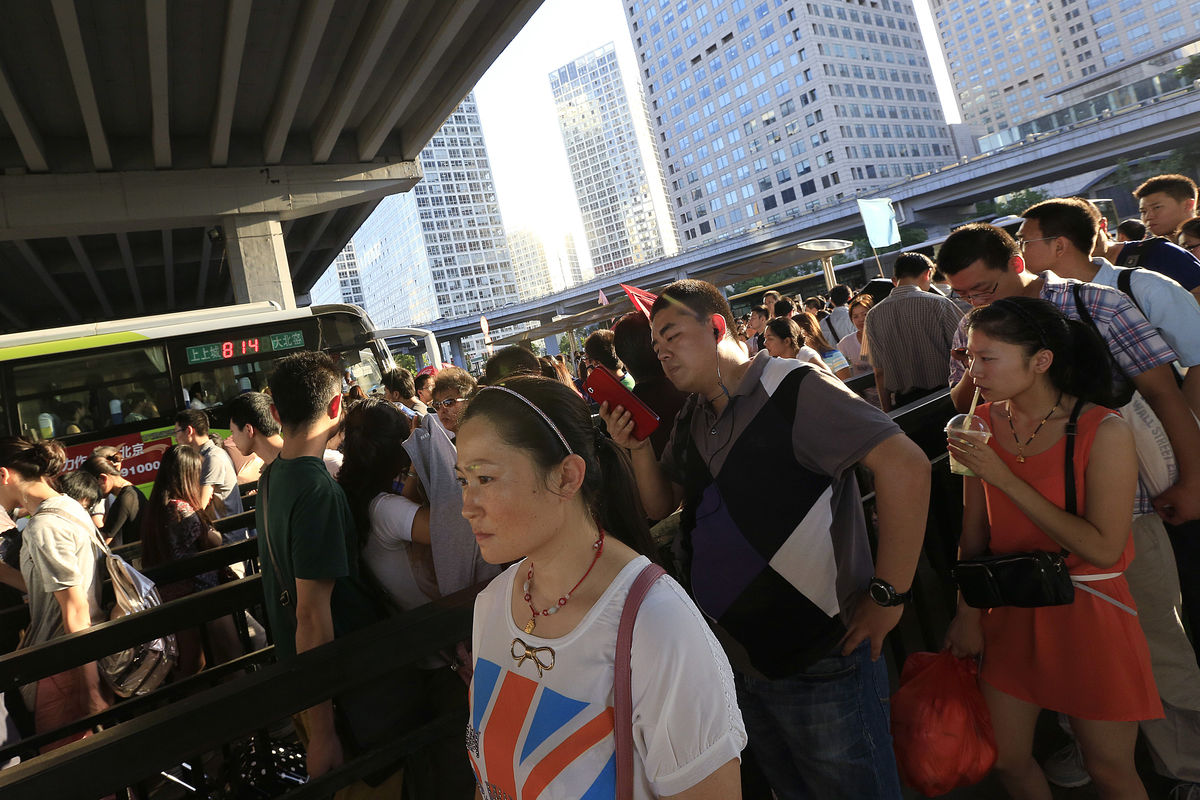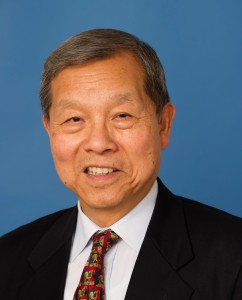
China needs a new prescription for growth: Cram even more people into the pollution-ridden megacities of Beijing, Shanghai, Guangzhou and Shenzhen.
While this may sound like a recipe for disaster, failing to expand and improve these urban areas could be even worse. That’s because the biggest cities drive innovation and specialization, with easier-to-reach consumers and more cost-efficient public transport systems, according to Yukon Huang, a former World Bank chief in China.
He estimates China’s leaders’ seven-month-old urbanization blueprint, which aims to funnel rural migrants to smaller cities, will slice as much as a percentage point off gross domestic product growth annually through the end of 2020.
“China’s big cities are actually too small,” said Huang, a senior associate at the Carnegie Endowment for International Peace’s Asia program in Washington. “If China wants to grow at 7 percent for the rest of this decade, it’s got to find another 1 to 1.5 percentage points of productivity from somewhere.”
A strategy that supports the biggest cities’ expansion would add $2 trillion to China’s output in 10 years — more than India’s 2013 GDP — according to Shanghai-based Andy Xie, a former Morgan Stanley chief Asia-Pacific economist.
With a population more than four times that of the U.S. living on roughly the same land mass, China should have big, densely populated urban areas, Xie said. To make that a reality, the megacities need to build up, not out, he added, citing Tokyo and its population of about 37 million as a workable example.
‘Ecological Catastrophe’
“If you do not focus on big cities with concentrated populations, China will become an ecological catastrophe,” he said. “If you pick the wrong model of urbanization, it sets you back not just for years, it could cap your income level for eternity.”
Beijing and Shanghai already have about 20 million people each, while Guangzhou and Shenzhen both top 10 million. Even so, given China’s 1.4 billion population, their concentration is low by global standards. In the U.S., the largest 10 metropolitan areas account for about 38 percent of GDP, about double that in China.
Echoing Mao-era central planning, China’s current urbanization policy decrees that populations will be “strictly controlled” in metropolises with more than 5 million people while expansion is allowed in mid-sized cities and encouraged in small ones. The plan will redress unbalanced development that has left megacities overburdened, with deteriorating environments, Vice Minister of Public Security Huang Ming said at a March briefing.
‘Old Thinking’
The edict shows the “persistence of old thinking” even after past attempts to shift people and resources to smaller, less productive cities proved “hugely wasteful,” Andrew Batson, an analyst at researcher Gavekal Dragonomics in Beijing, wrote in an August note.
“Planners still seem convinced that big cities are crowded, terrible places whose growth must be controlled,” wrote Batson, who has covered China since 1998. “In reality, big cities are China’s richest and most vibrant places, and restraining their growth does the economy no favors.”
Premier Li Keqiang is under increasing pressure to boost the economy, which is headed this year for its slowest expansion since 1990. Growth probably fell to 7.2 percent in the third quarter from 7.8 percent a year earlier, according to the median estimate of analysts in a Bloomberg News survey ahead of data scheduled for release tomorrow.
Fourth Plenum
While Li and his fellow Communist leaders have the chance to shift policy priorities when they gather for the fourth plenum that starts in Beijing today, any major rethink on urbanization is unlikely. The conclave will focus on efforts to bolster the rule of law, state media reported last month.
The pace of migration from rural areas to cities, a dynamic hailed by Li as key to the nation’s development, is set to slow by a third in the years from 2013 to 2020 compared with the previous seven years, the government forecasts.
That’s pressuring Li to find ways to optimize productivity. The rapid expansion of China’s cities hasn’t been accompanied by efficiency gains because of impediments including urban sprawl and inadequate infrastructure, according to Cui Li, a Hong Kong-based economist at Goldman Sachs Group Inc.
Achieving the same efficiencies as U.S. cities, which are modest compared to those in more compact European metropolises, could add 1 percentage point to annual growth by the end of the decade, she estimates.
Guangzhou, Shenzhen
An additional 4.2 million people can be added to Guangzhou and 5.3 million to Shenzhen if those cities had the same population density as Seoul, according to a March report by the World Bank and the State Council’s Development Research Center.
Making changes to land use that would spur denser cities could save China $1.4 trillion from a projected $5.3 trillion in infrastructure-spending needs during the next 15 years, World Bank chief operating officer Sri Mulyani Indrawati said.
There are signs of progress. A bus rapid-transit system that opened in Guangzhou in 2010 has saved passengers a combined 32 million commuting hours a year and is projected to reduce carbon-dioxide emissions by 84,000 tons in its first decade of operation, the United Nations estimates. In Kunming, capital of southwestern Yunnan province, a new district is being developed with a subway system, bus stations and green spaces planned every 300 meters.
Cleaner Skies
Building dense cities around mass-transit systems that balance commercial and residential areas would slash reliance on cars, according to the Energy Foundation, a San Francisco-based nonprofit organization that promotes clean energy. That would prevent as much as 800 million tons of carbon dioxide from spewing into the atmosphere by 2030, more than emitted by Germany in 2011, it estimates.
A continuation of old methods raises the specter of worsening traffic congestion and pollution in the biggest cities if migration continues to outpace policy makers’ plans.
“For the last two to three decades, China’s city planning has not taken migrants into account in their plans for transport, housing and many social services,” said Kam Wing Chan, a professor at the University of Washington in Seattle and author of “Cities With Invisible Walls: Reinterpreting Urbanization in Post-1949 China.” Urban problems including traffic gridlock “are mainly a result of not providing for population growth,” he said.
Mentioned: Yukong Huang, Source: Oct 20, 2014,

